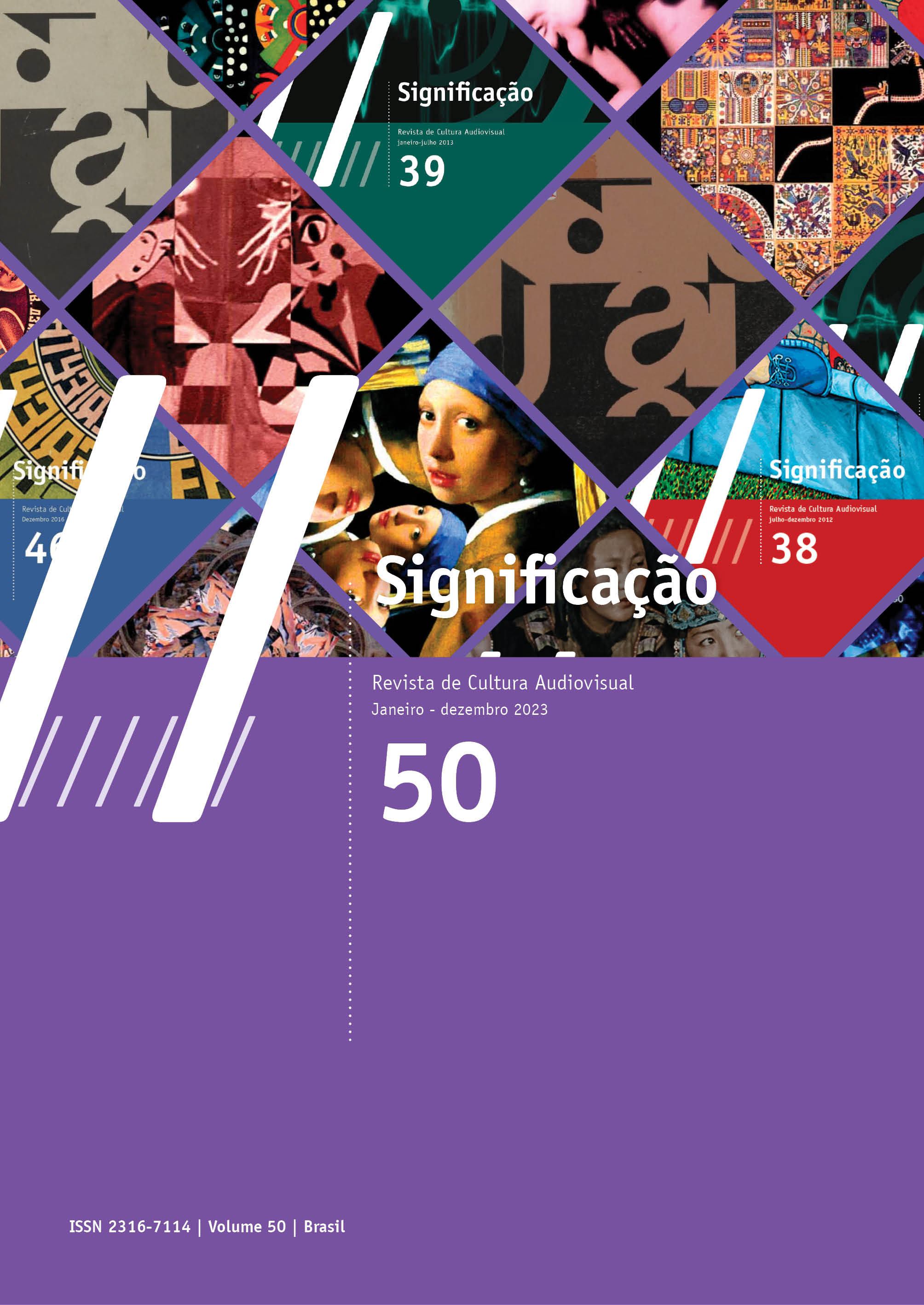Remote audiovisual editing: innovative, inclusive and multiuser technology
DOI:
https://doi.org/10.11606/issn.2316-7114.sig.2023.214304Keywords:
Audiovisual teaching, Editing, Remote Acces, Multiuser technology, InclusionAbstract
This article presents a project for implementing the Remote Edit Bay (IER)—a multiuser server that aims to provide access to remote editing and audiovisual post- production software—, being developed at Universidade Federal Fluminense (UFF). As a state-of-the-art project focusing on social needs, the IER will be made available free of charge for teachers and students from public educational institutions, contributing to digital inclusion, digital citizenship and the right to information, knowledge and communication.
Downloads
References
AMIEL, V. Esthétique du montage. Paris: Armand Colin, 2022.
AUMONT, J. Le montage, “la seule invention du cinéma”. Paris : Vrin, 2015.
BORDWELL, D. The way Hollywood tells it: story and style in modern movies. Los Angeles: University of California Press, 2006.
BUSTAMANTE, J. “Poder comunicativo, ecossistemas digitais e cidadania digital”. In: SILVEIRA, Sérgio Amadeu (org.). Cidadania e redes digitais. São Paulo: Comitê Gestor da Internet no Brasil: Maracá, 2010. p. 15-17.
COORDENAÇÃO DE APERFEIÇOAMENTO DE PESSOAL DE NÍVEL SUPERIOR. História e missão. Capes, 25 set. 2023. Disponível em: https://www.gov.br/ capes/pt-br/acesso-a-informacao/institucional/historia-e-missao. Acesso em: 13 fev. 2023.
CHATEAU, D. et al. Estética después del fin del arte: Ensayos sobre Arthur Danto. Madrid: Antonio Machado Libros, 2018.
COELHO, Franklin. “A cidade digital e a apropriação social da inovação tecnológica”. In: SILVEIRA, Sérgio Amadeu da (org.). São Paulo: Comitê Gestor da Internet no Brasil: Maracá – Educação e Tecnologias, 2010. p. 187-191.
IKEDA, M.; LIMA, D. Filme de Garagem. Catálogo-livro da Mostra Filme de Garagem. São Paulo: Centro Cultural da Caixa Econômica, 2014.
IVO-BARROSO, E.; SZAFIR, M. “Montadores brasileiros. Entre o anonimato e a força inventiva no audiovisual”. In: CONGRESSO BRASILEIRO DE CIÊNCIAS DA COMUNICAÇÃO, 42., 2019, Belém, PA. Anais […]. São Paulo: Intercom, 2019. Disponível em: https://www.portalintercom.org.br/anais/nacional2019/resumos/ R14-0644-1.pdf. Acesso em: 23 mar. 2023.
IVO-BARROSO, E.; LEOCÁDIO, J. L; BLANCO, M. “O ensino da montagem audiovisual na UFF: da moviola ao ambiente virtual de aprendizagem”. Revista Brasileira dos Estudos de Cinema e Audiovisual, São Paulo, v. 7, n. 1, p. 30-45, 2018. Disponível em: https://rebeca.socine.org.br/1/article/view/520. Acesso em: 23 mar. 2023.
FAUCON, T. Penser et Expérimenter le Montage. Paris: Presses Sorbonne Nouvelle, 2010.
HAYASHI, Silvia. “Timecode”. In: Montagem audiovisual: reflexões e experiências. IVO-BARROSO, E.; MOURÃO, Maria Dora; SZAFIR, Milena (org.). Rio de Janeiro: Autografia, 2021.
LA FERLA, J. Cine y digital. Aproximaciones a posibles convergencias entre el cinematógrafo y la computadora. Buenos Aires: Ediciones Manantial, 2009.
MANOVICH, L. The Language of the New Media. Cambridge, MA: The MIT Press, 2001.
PEARLMAN, K. Cutting Rhythms: Intuitive Film Editing. London: Routledge, 2015.
SUPERINTENDÊNCIA DE TECNOLOGIA DA INFORMAÇÃO. Sobre. Portal STI/UFF, 12 out. 2022. Disponível em: https://sti.uff.br/sobre/. Acesso em: 13 fev. 2023.
SHAVIRO, S. Post Cinematic Affect. London: John Hunt Publishing, 2010.
SHAW, J. “A nova arte midiática e a renovação do imaginário cinemático”. In: MACIEL, K. (org). Transcinemas. Coleção N-Imagem. Rio de Janeiro: Contracapa, 2009. p. 193.
SILVEIRA, S. A. Para além da inclusão digital: poder comunicacional e novas assimetrias. In: BONILLA, M. H. S.; PRETTO, N. D. L. (orgs). Inclusão digital: polêmica contemporânea. Salvador: EDUFBA, 2011. p. 49
VILLAIN, D. Le montage au cinéma. Paris: Editions Cahiers du Cinéma, 1991.
Downloads
Published
Issue
Section
License
Copyright (c) 2023 Elianne Ivo Barroso, Márcia Bessa, Maria Gabriela Capper, Carolina Rodrigues, Ivan Athanazio, Théo Brígida

This work is licensed under a Creative Commons Attribution-NonCommercial 4.0 International License.
Authors who publish in this journal must agree with the following terms:
- Authors keep their copyrights and grant the journal first time publication rights, having their articles simultaneously licensed under the Creative Commons Attribution License, which allows sharing texts with authorship recognition and first publication on this journal for non-commercial purposes.
- Authors are allowed to make additional contracts, for a non-exclusive distribution of the article’s version published on this journal (e.g.: publishing in institutional repositories of articles or as a book chapter), with authorship recognition and first publication on this journal.
How to Cite
Funding data
-
Coordenação de Aperfeiçoamento de Pessoal de Nível Superior
Grant numbers Edital Impactos 2022/Capes 300 mil reais
















